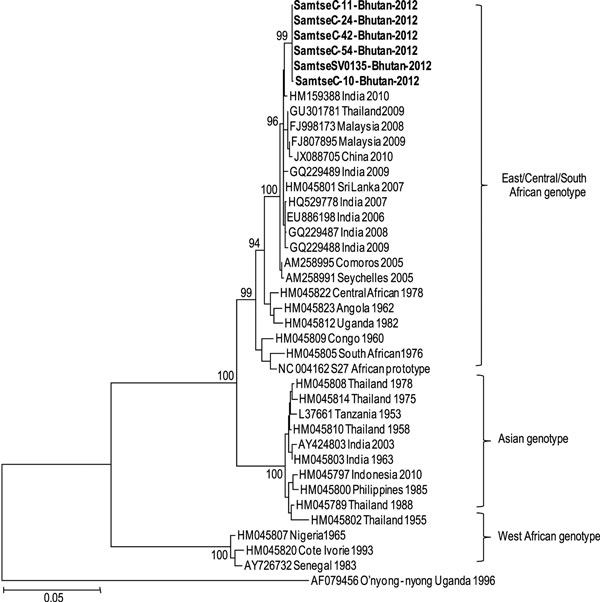Volume 19, Number 10—October 2013
Dispatch
Chikungunya Fever Outbreak, Bhutan, 2012
Figure 1

Figure 1. . Phylogenetic analyses of the envelope protein 1 (E1) sequences of chikungunya virus (CHIKV) isolated in Bhutan in 2012. The neighbor-joining tree was constructed by using MEGA 5.0 (www.megasoftware.net); bootstrap values were obtained from 2,000 replicates. The unrooted tree topology was based on multiple alignments of the E1 gene nucleotide sequences (1,320 bp) and 34 CHIKV E1 regions, representing a wide range of localities, from GenBank. Each CHIKV isolate is represented by the country of origin, year of isolation, and GenBank accession number. Six representative isolates from the 2012 outbreak are included; the isolates show 99.9%–100% nt identity with each other and 99.4%–99.5% nt identity with circulating Indian 2012 CHIKV (GenBank accession no. HM159388). Scale bar indicates nucleotide substitutions per site.